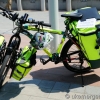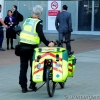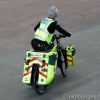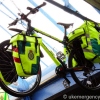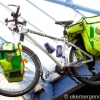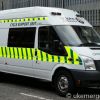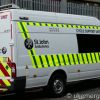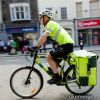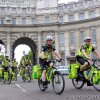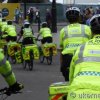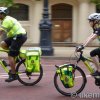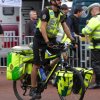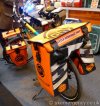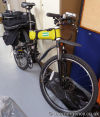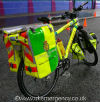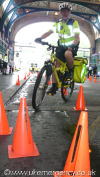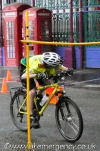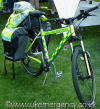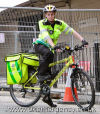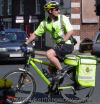Category: Ambulance Cycles
Push bikes used for ambulance purposes
Here are a pair of St. John Ambulance cycles…

Here are a pair of St. John Ambulance cycles parked in front of two motorised ambulance vehicles. The bikes are made by Swissbike and have a heavy-duty hinge under the seat, meaning the bikes can be folded in half and transported easily.
Here is an example of a St. John Swissbike in action in the daylight.
This privately operated ambulance cycle is heavily…

This privately operated ambulance cycle is heavily equipped. It has the usual medical equipment on the rear and front panniers. The whole bike is decked out in yellow with green stripes.v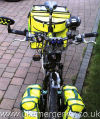
On the handlebars is a vast array of equipment. It has a mirror, a small and a large siren, white lights, blue constant light, blue flashing lights and even a bluetooth Tomtom Rider sat nav. It’s no wonder the brakes have been upgraded to cope with the weight.
In August 2006, a two-month trial began using…

In August 2006, a two-month trial began using cycles to respond to 999 calls in The City area of London. This follows from the success of established units in the West End and Heathrow. Here are two of the four medics with their bikes.
… As an emergency call comes in by mobile ‘phone from the control room, one medic makes a quick note of the details and then checks the route on the map.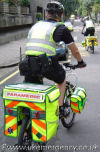
… Both the paramedic and technician then head off to take the fastest route to the patient, cutting through traffic and side streets.
Here is a paramedic cyclist practicing riding down…
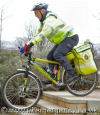
Here is a paramedic cyclist practicing riding down steps with a heavy load on the rear of the bike.
And the same person practicing riding up steps! The key is to maintain forward motion by approaching at speed, pulling the handlebars up and continuing to pedal up the steps. Spotters on the steps are ready to lend a hand if the rider can’t make it to the top.
This is Pat Andrews, a cycle response unit paramedic…
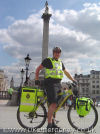
This is Pat Andrews, a cycle response unit paramedic with London Ambulance Service. Behind him are the famous London landmarks of Nelson’s Column in Trafalgar Square and Big Ben.
A closer look at the bikes used by the LAS medics. Notice the large yellow box on the back (with removable bags and oxygen cylinder) and the small bags on the front.
This is the equipment used by the London Ambulance …
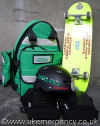
This is the equipment used by the London Ambulance Service’s skateboard response unit (which is part of the cycle unit). The photo shows the ambulance back-pack with essential emergency care equipment, as well as the protective equipment worn by the skater. The board is in European-standard ambulance yellow with LAS wording, crest and NHS logo.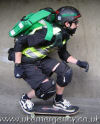
The skateboard and equipment in use. Following on from the success of the cycle unit, a trial of responding to emergencies in inaccessible areas by skateboard was started. The top side of the skateboard is not liveried due to the high-grip surface.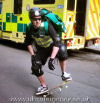
Another view of the skateboard in use, being ridden by an emergency medical technician. A more traditional ambulance can be seen in the background. The information concerning this venture was released to the press on 1 April 2004, and yes it was an elaborate April fool!
Heathrow airport was only the second in the…

Heathrow airport was only the second in the world to have an ambulance cycle unit (Vancouver was first). Here EMT Gerard Robinson and Duty Station Officer Alan Payne switch on their blue flashing lights inside the terminal for press photos. The cycle unit and this press call were covered by BBC’s ‘Airport’ television programme.
The same two ambulance cyclists cycle past the tails of British Airways planes. It is a big advantage to be able to respond to medical emergencies at speed both inside and outside the buildings.

